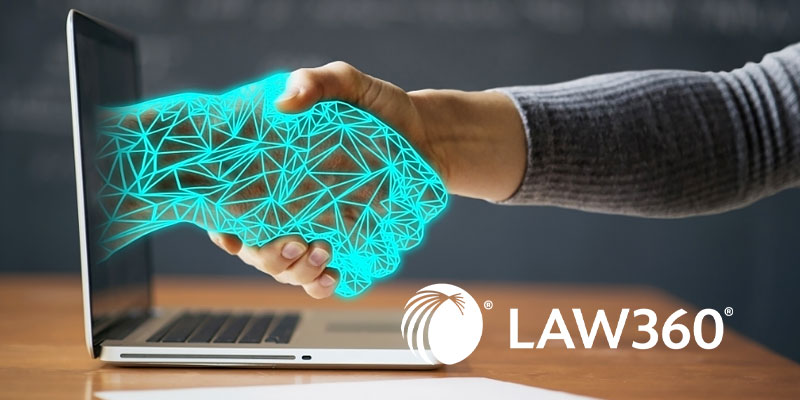An e-discovery reference model used by lawyers and business professionals is being updated to account for new technologies, increasing data privacy regulations and heightened cybersecurity risks, marking the most significant changes to be made to the model in nearly 20 years.
The 2023 EDRM, which was published in March, was modified to include the latest version of the information governance reference model.
The Electronic Discovery Reference Model outlines the different steps in e-discovery and makes it easier for attorneys and business professionals to communicate about where they are in the e-discovery process, according to industry experts.
Robert Daniel, senior director of litigation services at legal solutions provider Integreon Inc., recently told Law360 Pulse that the EDRM needs to be updated to address changes in e-discovery that have occurred since the model was first introduced.
Daniel, who was formerly senior vice president of legal discovery operations at Bank of America, said some of the changes that need to be addressed in the updated EDRM are new technologies such as messaging apps and video conferencing.
“A lot has happened in the world since this was first published and it needs to be refreshed, and some of that content included to be more useful to people that are practitioners and need guidance,” he said.
The EDRM was first introduced in 2005 by attorney George Socha and information technology consultant Tom Gelbmann, according to e-discovery organization EDRM, which oversees the model.
Mary Mack, CEO and chief legal technologist of EDRM, said that when the e-discovery model was introduced, documents were starting to be stored on discs, instead of being printed out and kept in boxes, and people didn’t have a standardized process for handling the discs.
“People were reaching for the vocabulary to describe not only what they were doing, but how what they were doing informed the next step in the process, and what is the process, and how do we handle these documents,” Mack said.
In 2016, Duke University School of Law purchased the organization EDRM in a move to expand its involvement in e-discovery and information governance, according to the school’s website.
Three years later, Mack and EDRM’s current chief strategy officer Kaylee Walstad bought the organization from Duke Law’s Bolch Judicial Institute, which was formed in 2018, according to an announcement on the deal.
The e-discovery model hasn’t undergone significant changes since it was first introduced, according to Mack.
Despite the lack of changes to EDRM in nearly 20 years, the model is a helpful tool for teaching students and judges about the e-discovery process.
Shannon Bales, automated litigation support manager at Munger Tolles & Olson LLP and professor at UCLA and Santa Ana College, said that the model is helpful for teaching students, associates and judges about the steps in e-discovery.
“They may not be aware of the specializations involved in each one of these phases and that they’re all distinct skills,” Bales said.
The EDRM includes, from left to right, identification, preservation, collection, processing, review, analysis, production and presentation, according to the model.
The 2023 EDRM, which was published in March, was modified to include the latest version of the information governance reference model, Mack said.
Mack said that even though the EDRM is based on U.S. court rules, the model is used around the world, and one of the changes that needs to be made to the updated model is to make it global.
“Before Kaylee and I acquired the EDRM, we went to a conference in Japan … all of the slide decks that the presenters at this international conference started with [were] the EDRM model,” she said.
The project to update the e-discovery model, referred to as EDRM 2.0, is currently accepting public comments and volunteers, according to Mack.
Mack said that 50 people have volunteered so far to participate in the project and the public comment period runs until the end of 2023. The EDRM is also hosting a symposium in June in Detroit where people will discuss EDRM 2.0 in person.
E-discovery and litigation professionals already have many ideas for how the EDRM can be improved.
Tara Emory, senior vice president of strategic growth at e-discovery company Redgrave Data, said that she would like EDRM 2.0 to include more detailed information for practitioners about technologies and workflows.
“The plan is for the updated guidelines to provide additional context to help attorneys, support staff, service providers, and even judges, better understand all the components that exist today in each phase of the EDRM,” Emory said.
Bales added that he would like EDRM 2.0 to have a designated step for early case assessment, which happens between the collection and processing phases of e-discovery.
“Now it’s so much part of the routine of what we do in a way to be efficient and pull down data, it’s reached the level that it should be its own phase,” he said.
EDRM 2.0 faces some challenges including the global scale of the project and reaching a consensus among different disciplines, according to experts.
“Everybody’s got their own perspective of what is required, but yet the group has to come to consensus,” Daniel said, adding that the model has to be usable for both attorneys and business professionals.


